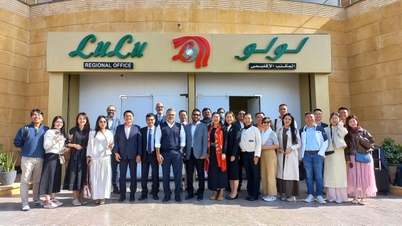Data from the General Statistics Office shows that urban populations increased continuously during the period 2010-2022, while the population growth rate of rural areas was negative or negligible for many years. In 2010, the urban population increased by 3.42%, while the rural population increased by only 0.28%. In 2014, the urban population increased sharply by 4.88%, while the rural population experienced negative growth of 0.64%. In 2022, the urban population increased by 2.15%, while the rural population increased by only 0.3%. Along with this, the proportion of the urban population increased from 30.4% in 2010 to 37.6% in 2022. These two developments are fundamentally due to the process of construction and urbanization (the birth rate in urban areas is not as high as in rural areas).
Furthermore, when using the Miyazawa economic demographic model, several noteworthy observations can be drawn. Specifically, final consumption by rural residents spills over urban income more than final consumption by urban residents spills over rural income (0.093 vs. 0.079). Government spending (current expenditure) also essentially spills over urban income; this factor spills over urban income 3.09 times more than its spillover effect on rural income.
Furthermore, the spillover effect of a unit of goods exports is minimal, affecting both urban and rural incomes. Exports of basic services have a significantly larger spillover effect on urban incomes than rural areas. Goods exports have a poor spillover effect on urban areas because agricultural, forestry, and aquatic products are not yet fully processed like products from industrial processing. This also means that the rate of deep processing of exported agricultural products remains quite low.
In general, the overall spread of final demand from rural areas to general income is higher than that from urban areas (0.236 vs. 0.152). Most final demand from agriculture, forestry, fisheries, and agricultural product processing industries has a higher spread of income to rural areas than the general average.
Generally speaking, final consumption in rural areas has a stronger spillover effect than final consumption in urban areas. It not only causes spillover effects on their own output, added value, and income, but also creates a fairly strong spillover effect on the output, added value, and income of urban areas.
Thus, it can be seen that urbanization needs to be linked to the sectoral structure of the economy. Hopefully, this research can help policymakers consider options when formulating development policies in general and economic policies in particular, so that the country can soon achieve inclusive prosperity.
Source


![[Photo] Prime Minister Pham Minh Chinh holds a phone call with the CEO of Russia's Rosatom Corporation.](/_next/image?url=https%3A%2F%2Fvphoto.vietnam.vn%2Fthumb%2F1200x675%2Fvietnam%2Fresource%2FIMAGE%2F2025%2F12%2F11%2F1765464552365_dsc-5295-jpg.webp&w=3840&q=75)


![[Photo] Closing Ceremony of the 10th Session of the 15th National Assembly](/_next/image?url=https%3A%2F%2Fvphoto.vietnam.vn%2Fthumb%2F1200x675%2Fvietnam%2Fresource%2FIMAGE%2F2025%2F12%2F11%2F1765448959967_image-1437-jpg.webp&w=3840&q=75)












































![[OFFICIAL] MISA GROUP ANNOUNCES ITS PIONEERING BRAND POSITIONING IN BUILDING AGENTIC AI FOR BUSINESSES, HOUSEHOLDS, AND THE GOVERNMENT](https://vphoto.vietnam.vn/thumb/402x226/vietnam/resource/IMAGE/2025/12/11/1765444754256_agentic-ai_postfb-scaled.png)





















































Comment (0)